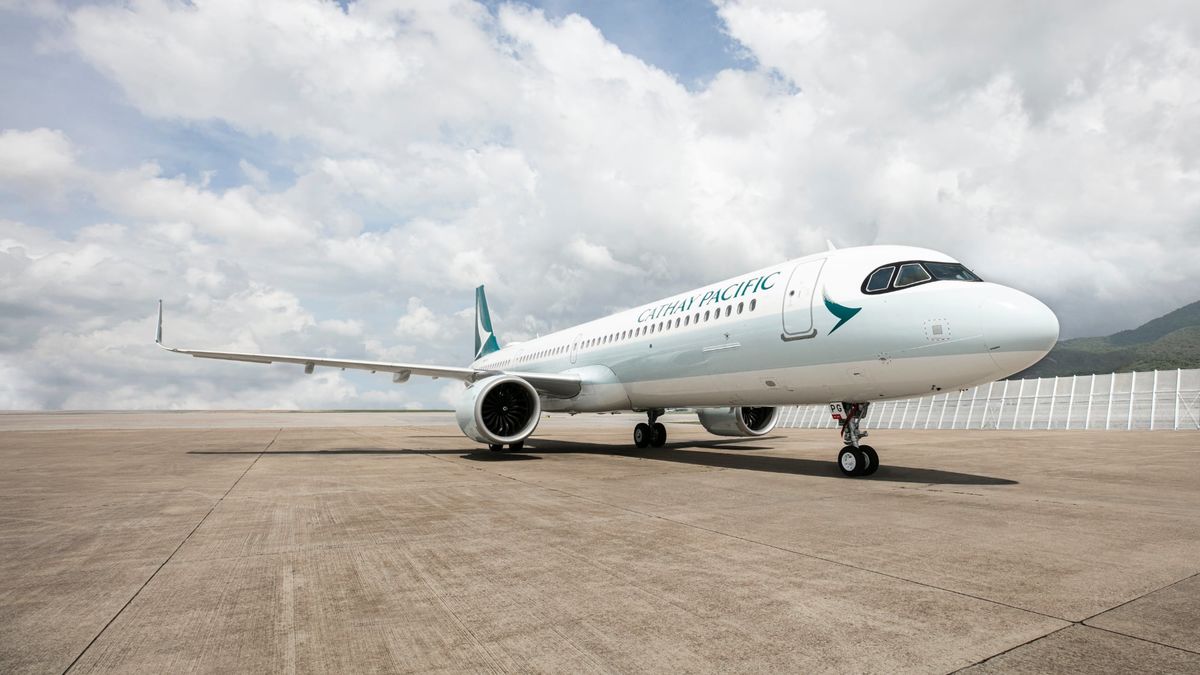Cathay Pacific adds Airbus A350 economy seats to new A321neo
The regional aircraft has seats that are quite literally designed for the long haul.

While Cathay Pacific chose to install business class recliners rather than lie-flat beds in the nose of its new Airbus A321neo jets – a matter of contention among some frequent flyers – travellers running right will find the same economy class seats as fitted on Cathay’s long-distance Airbus A350 flagships.
These are, literally, economy seats made for the long haul, with the A350 regularly chalking up flights of 12+ hours to the UK and Europe – even through the routes flown by the nimble single-aisle A321neos will typically be just a handful of hours.
“We chose the same seat as the A350-1000, so it has all the comfort attributes of a long-haul seat,” says Guillaume Vivet, Cathay Pacific’s Head of Customer Experience for Inflight Product.
That seat is the Vector Y+ model from Hong Kong’s HAECO Group, which like Cathay itself is an arm of global conglomerate Swire.
“Although adapted to a single-aisle environment, it is much more of a long-haul seat than a short-haul seat in comfort factors like the cushioning and the seat articulation,” Vivet tells Executive Traveller.
“We also ported over some key features from our A350-1000 such as the tablet holder and the ergonomic headrest.”
However, Vivet won’t be drawn on the A321neo’s seat pitch, and seeks to downplay this measurement that’s become a de facto metric for legroom – and by extension, passenger comfort.
“We don’t necessarily talk too much about the specifics because it can be quite misleading in so many ways,” Vivet explains.
“I could show you two different seats with the exact same pitch but two completely different customer experiences – so we look at, and have improved on, the parameters that we feel are most important to the passengers, such as knee clearance and shin clearance.”
More to comfort than seat pitch alone
However, Vivet admits “we are aligned to what we are flying on the A321ceo” – referring to the original or ‘classic engine option’ A321 which preceded the ‘new engine option’ A321neo.
That indicates the A321neo’s economy seat pitch will be around 30”, although the seat width remains unknown but will likely be around the 18” mark.
For the A321neo’s business class, Vivet says “we are pretty much in the same ballpark as the A321ceo”, which is listed as 21” wide with 47” pitch and a 36° recline.
“The seat width is very similar but slightly bigger, and recline has been increased quite a bit.”
Just above the the handy tablet and smartphone ledge which folds down from below the 11.6” HD video screen, there’s a pair of USB ports: one in the more common USB-A size and the other in the newer USB-C flavour now appearing on everything from noise-cancelling headphones to laptops.
“These are high-power USB ports so the intent is that you can charge your laptop over USB-C,” Vivet explains. He also confirms that while each business class seat has its own AC socket, there are no AC outlets – not even shared between passengers – in economy class.
“We know that USB-C has penetrated the laptop market, so we felt comfortable in not having the AC power socket in economy.”
Read more: With 4K screens and streaming Bluetooth, Cathay seeks to redefine IFE
One feature that is common from tip to tail on the A321neo are the larger overhead bins, with Cathay opting to have Airbus install the roomier Airspace XL bins instead of the regular-sized compartments.
This decision reflects that the aircraft’s short regional routes are more likely to see passengers travelling with only carry-on bags.
“On a standard A321 when you open the two compartments above the seats you can fit at best five standard-sized cabin bags, but in these bins you can fit eight carry-on bags, so there is 60% more space.”
Something else that Cathay’s regional frequent flyers will notice is the colour scheme inside the A321neo: it’s remarkably devoid of the signature ‘Cathay green’.
The A321neo’s palette is more subdued, with softer shades of champagne in business and charcoal in economy – although the economy seats remain trimmed in a muted Cathay Dragon red.
“It’s an evolution of our cabin design language but one that’s still aligned with the Cathay Pacific colour palette, but more with some of the secondary colours,” Vivet shares.
“Our previous regional business class product was launched in 2012, so this is really a new- generation design language.”
Cathay Pacific’s new Airbus A321neo begins flying this week, starting with Shanghai from August 4 before visiting a handful of other debutante routes in China and Taiwan later this month.
Four A321neo aircraft are already in Cathay’s Hong Kong hangars, with two more to follow this year and a further ten across 2022-23.
Also read: Asia Miles CEO sets a flightpath for the new “Cathay” superbrand






